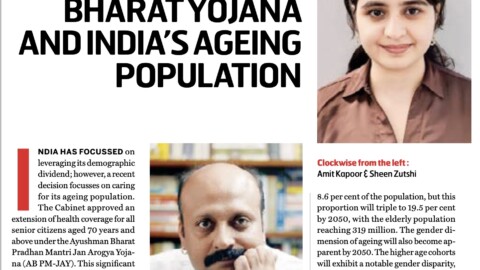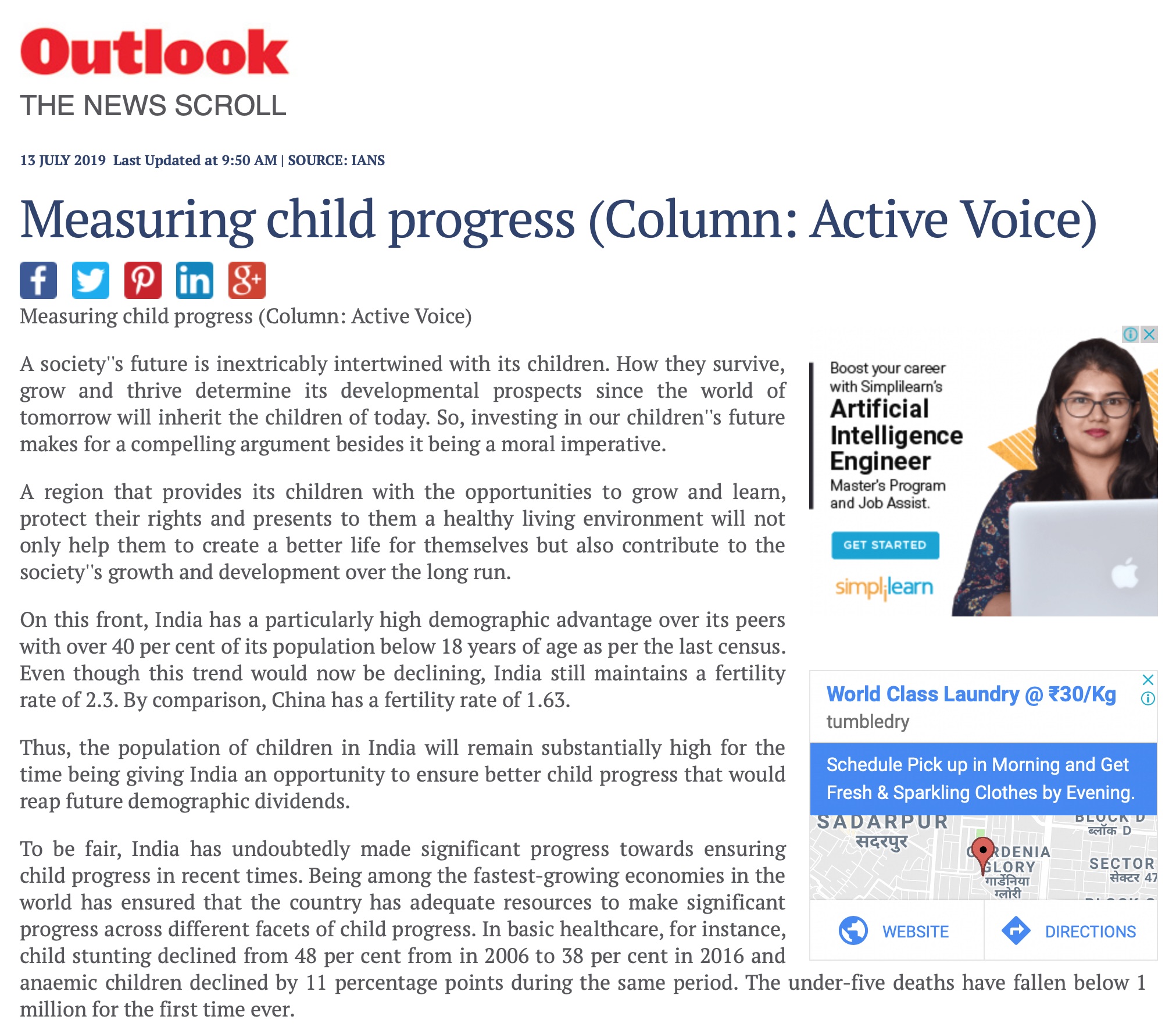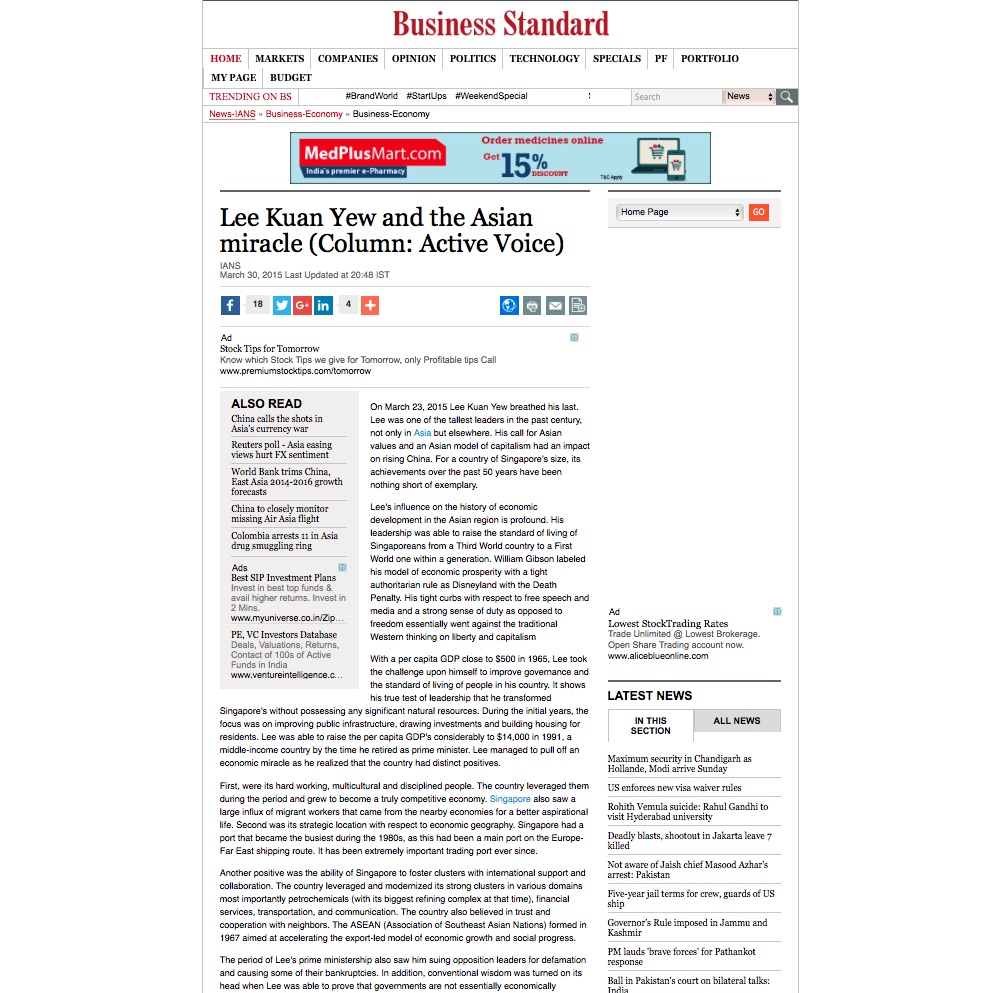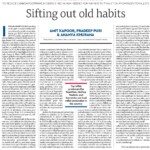By Amit Kapoor and Inputs by Ankita Nigam
India has set new benchmarks in Research, Development, and Innovation, proving its prowess on the global stage more than once. It developed COVID-19 vaccines in record time, became the first nation to land a satellite on Mars in its maiden attempt, and made history as the first country to achieve a soft landing on the Moon’s south pole. These significant strides in innovation are evident in its improved rankings and increased patent filings. There has been more than two-fold increase in patent filings since 2014-15. Patent filings by women applicants rose from 15 in FY15 to 5,183 in FY24. According to the WIPO Report 2024, India ranks sixth among the top 10 patent filing offices globally. India’s rank in the Global Innovation Index has improved to 39th in 2024, up from 81st in 2015, among 133 economies. India ranks 4th globally in the World Intellectual Property Organization’s (WIPO) Science & Technology (S&T) Cluster Ranking, with key cities like Mumbai, Delhi, Bengaluru, and Chennai listed among the World’s Top 100 S&T clusters.
The Union Budget of 2025 strategically emphasizes investment in innovation. The Finance Minister has allocated ₹20,000 crores for Research, Development, and Innovation. Key initiatives by the government for this sector include a financial pool of ₹1 lakh crore for private-sector-driven research and innovation at a commercial scale, the operationalization of the Anusandhan National Research Fund for basic research and prototype development, the establishment of an additional 50,000 Atal Tinkering Labs over the next five years, and a venture capital fund of ₹1,000 crore for the space economy.
The government initiatives, such as Start Up India, Digital India, and the Atal Innovation Mission, aims to continuously foster entrepreneurship, research, and technological advancement. Over the years, the number of startups in India has surged from around 502 in 2016 to 1,57,706 as of December 31, 2024. India has also created 117 unicorn startups. Globally, India ranks third in terms of the total number of unicorns created, behind China and the United States.
While this is a notable achievement, India still trails in overall R&D spending, with GERD accounting for just 0.64% of its GDP—a relatively low figure compared to other developed and emerging economies. For instance, Israel allocates 6.02% of its GDP to R&D, South Korea spends 5.21%, the USA contributes 3.59%, and China invests 2.56%. India also lags in the number of researchers engaged in R&D. South Korea leads with 8,614 researchers per million people, while other developing nations such as Russia and China have 2,724 and 1,601 researchers per million people, respectively. Despite India’s large demographic dividend, the country has only 260 researchers per million people, reflecting a significant gap in human resources dedicated to research and innovation.
Usually, business contribution in GEDR is more than 50% in developed and emerging economies. Israel’s private sector accounts for an impressive 88% of R&D spending. However, in India, the private sector has been relatively less proactive in driving R&D initiatives. In contrast, the government plays a dominant role, contributing 56.1% of GERD, while private entities contribute 36.8%, followed by Higher Education institutes, which account for 7.1% of GERD. These trends are also evident at the subnational level within India.
Innovation is not uniformly driven across all states in India; instead, it is primarily led by a select few states that have the infrastructure, resources, and conducive ecosystems to foster research and technological advancements. NITI Aayog’s India Innovation Index, highlights the significant variations among Indian states. In 2021, Karnataka, Manipur, and Chandigarh topped their respective categories, with scores of 18.05, 19.37, and 27.88, respectively. In contrast, Chhattisgarh, Nagaland, and Ladakh ranked at the bottom, with scores of 10.97, 11.0, and 5.91, respectively. This underscores the significant variation in innovation capacities of Indian states.
The disparities are also evident in other metrics. For instance, all states in India invest less than 0.5 percent of their GDP on R&D. Jammu and Kashmir (0.4 percent) and Punjab (0.2 percent) lead Indian regions with the highest investment in R&D. Meanwhile, 12 states invest virtually nothing in R&D. In terms of patent applications, Chandigarh leads with 300, followed by Delhi with 100. However, states like Nagaland (3), the Andaman and Nicobar Islands (3), and Bihar (1) still have a significant gap to bridge in order to catch up with the top-performing regions in India.
These disparities in innovative capacity arise because the states in India are at varying stages of development. While some states have made significant strides in innovation, others are still grappling with foundational challenges. For instance, Bihar is still considered factor-driven states with relatively low per capita incomes of around $420. In stark contrast, states like Sikkim have a much higher per capita income of $4,304, showcasing a vast disparity in prosperity and economic output among different states. This economic imbalance highlights the challenge of achieving equitable development, especially in terms of innovation, across the country.
Therefore, it is crucial for states to address their unique regional characteristics and socioeconomic challenges that impact their innovation potential. Indian regions must prioritize the development of a strong triple-helix model, encouraging collaboration between government, academia, and industry. This approach has been successfully demonstrated by states like California and Massachusetts in the United States. Substantial progress can be made by boosting private sector investment in R&D and creating more job opportunities in STEM fields. State governments play a pivotal role in fostering R&D by providing incentives to public institutions, private companies, universities, and innovative startups. With sustained effort and focus, the 2025 Budget’s vision will fuel India’s rise as a powerhouse of innovation.
The article was published with Business World on February 8, 2025.























